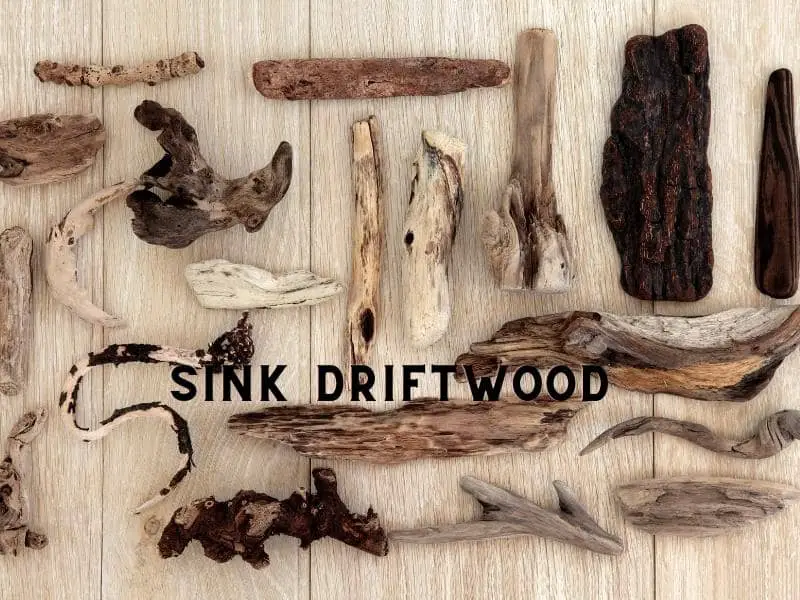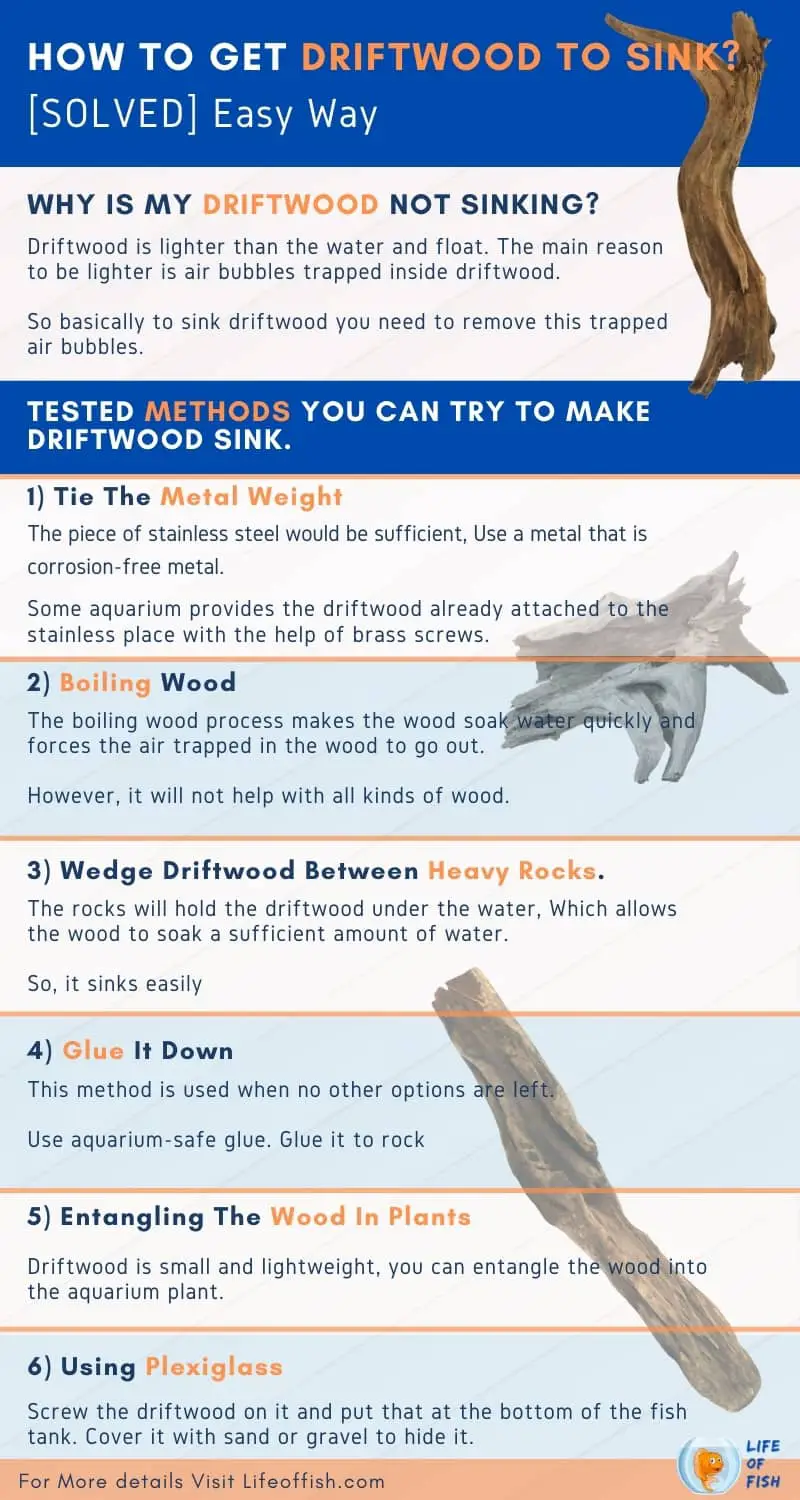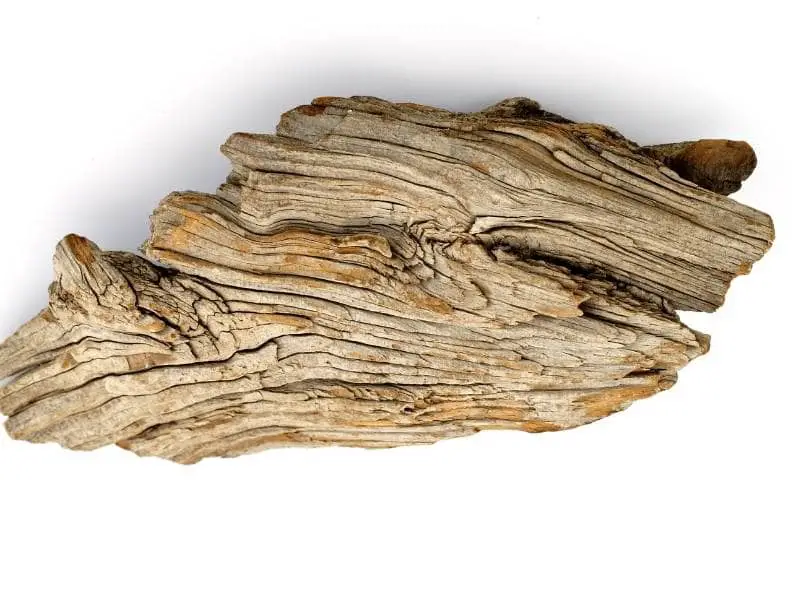So How To Get Driftwood To Sink? You may have to use the weight to hold the Driftwood in the water. Some aquarists use rocks or decorations to put weight on the driftwood. Submerge the wood until it is completely saturated.
Why is my Driftwood not sinking?
Jump To
- 1 Why is my Driftwood not sinking?
- 2 Here are some of the tested methods you can try to make driftwood sink.
- 3
- 4 How long does it take to sink?
- 5 How do you anchor driftwood in an aquarium?
- 6 Does boiling wood make it sink?
- 7 How do you Water log wood?
- 8 Does boiling wood make it sink?
- 9 How Long Should You Boil Driftwood?
- 10
- 11 How to place prepared driftwood in the fish tank.
- 12 Are your Fish More Stressed When the piece of driftwood Floating Around?
- 13 Final Verdict:

Driftwood has reached the seashore because it is lighter than the water and float. It would be best if you had something to push it down to the bottom of the tank. Putting more weight on the driftwood would make it heavier than the water, and the driftwood would sink. The air trapped in the wood will be forced out by the water, giving it required weight to sink.
Another way is to boil the driftwood to reduce the buoyancy faster than making the piece of driftwood sink. The boiling process naturally drives out the air making the driftwood filled with water.
When the water enters the wood, it is soaked by it making it heavier. Also, boiling sanitizes the driftwood from harmful bacteria’s and algae.
You can try any of the above methods to make driftwood sink in the fish tank.

Here are some of the tested methods you can try to make driftwood sink.
1) Tie the metal weight.
You can try metal that is corrosion free such as stainless steel. The piece of stainless steel would be sufficient to hold the wood at the bottom of the tank. Also, it is easy to hide the stainless steel place in the water with gravel or sand. Some aquarium provides the driftwood already attached to the stainless place with the help of brass screws.
It increases the weight of the driftwood, which makes it sink immediately after you put it into the water or Weigh it down with a slab of slate tied down with the fishing line
2) Wedge the driftwood between a couple of heavy rocks.
The rocks will hold the driftwood under the water, making it sink until it soaks a sufficient amount of water and holds its position without needing support. This method gives you the flexibility to re-arrange the wood without needing much effort. You can move the wood to other places, re-arrange the rocks and the driftwood will be ready for decoration.
3) You could glue it down.
This method is used when no other options are left. Find the glue that is made for the aquarium. Use the heavy stone that can hold the driftwood bottom of the fish tank. Use the glue to attach the wood to the large rock.
Keep it overnight for the glue to stick and the next day put the wood in the tank. It will immediately go down, and you will be ready to put other decorative stuff. Avoid glue which can produce toxic chemicals after reacting with the fish tank water. It may have a lethal effect on the fish.
4). Entangling the wood in plants
If the driftwood is small and lightweight, you can entangle the wood into the aquarium plant. Some plants are strong enough to hold the driftwood in the water. You can use fishing line to hold it in place.
Entangling the wood in the water with the plant is the natural process that you generally see in the deep water or the pond or river. The plant holds the driftwood under the water. It happens all the time.
5) Using plexiglass is an innovative solution
Using plexiglass is an innovative solution that you can try to hold your driftwood underwater. The plexiglass is similar to acrylic, but it will not harm the fish tank water. Acrylic-made sheets may react to the water after some time making the water toxic.
The plexiglass is safe and provides much-needed support to the drifting water. Use the required size piece of the plexiglass in the tank. Screw the driftwood on it and put that at the bottom of the fish tank. Cover it with sand or gravel to hide it.
How long does it take to sink?
The average time it takes to sink most driftwoods is anywhere from 48 hours to 2 weeks (for boiled, highly porous driftwood ). It depends on the porosity of the wood and how dry it is. For less porous driftwood it may take up to 4 weeks or even 2 months to sink. But, always boiling can accelerate the process by removing air pockets inside the wood. Also, keep in mind until you weigh them down, some driftwood will never completely sink
How do you anchor driftwood in an aquarium?
There are several ways you can anchor the driftwood in an Aquarium. Many driftwoods sold in the aquarium store are already made ready for the fish tank so that they may sink easily. You may not need to anchor them. The driftwood that resists sinking would require special arrangements to sink them and keep it sinking at the bottom of the fish tank.
Before you proceed to forcefully sink the driftwood in the tank with the heavy material’s health, ensure that the material is water-resistant. Also, it will not produce toxic chemicals after being kept in the water for a more extended period. Make sure to use a fishing line to tie the wood to something heavy.
Does boiling wood make it sink?
The boiling wood process makes the wood soak water quickly and forces the air trapped in the wood to go out. However, it will not help with all kinds of wood. The boiling process removes the tars and resins when the heat is applied to the wood. This makes the wood dry and less sinkable. You must first check what kind of wood you are trying to use in the aquarium.
How do you Water log wood?
The waterlog process entirely depends on the type of wood you are using for the aquarium. The wood with rings and tar on it may be covered with a shield that protects the wood from the water getting inside. Also, some wood would not be very porous, so the water will find a hard time entering it.
As a result, you may have to drill holes to allow the water to enter inside and make the wood’s internal section wet. Another thing that plays a significant role in waterlogging is the water soaking ability of the wood. Not all wood is good at socking the water. Some wood soaks the water quickly, and some may take years.
You much have a lot of patience when it comes to water logging the driftwood. but you can always buy pre-water-logged driftwood. but take precautions to sanitize them properly.
Does boiling wood make it sink?
Yes. when you boil the Driftwood, air trapped inside the wood will expand and get released while filling those pores with water. That decreases in the buoyancy of wood, which makes driftwood sink. Also, boiling can help to release tannins from wood that can affect water color in aquariums.
How Long Should You Boil Driftwood?
Boiling the Driftwood for 1 or 2 hours is recommended to kill algal, fungal spores, and many harmful bacteria. Boiling driftwood has various benefits. The process sterilizes the driftwood and makes it clear from the microorganism.
How to place prepared driftwood in the fish tank.
Once the driftwood is prepared for the aquarium, it is time to place them in the fish tank. To find the ideal position, you should sketch to see how it will look in the tank. The most convenient space is in the back of the fish tank. The water in the fish tank creates a magnifying effect. When you keep the object in the water, it looks close to the actual distance. Use this phenomenon to decorate your fish tank with driftwood.
Keeping the Driftwood behind provides more space for the fish to swim freely. All the decorative stuff will be arranged at the back of the tank for aesthetic purposes. It looks beautiful and does a great job of improving the fish’s experience so they can also enjoy their habitat. Think of other elements and equipment as well.
There will be a filter, oxygen pump, feeding net, gravel or sand, plants, and many other things that will take place in the tank. You should have the vision to arrange all this stuff in the proper order to avoid trouble in accessing any of the elements in the future.
Read more Aquascaping Advanced Guide-Learn Professional Aquascaping
Are your Fish More Stressed When the piece of driftwood Floating Around?
Driftwood floating in the tank may look similar to the driftwood stays at one play. The fish would not be surprised to see floating driftwood in the water. This is a natural condition for them and in the river or the pond; floating driftwood is most common. Fish would love to swim around the floating wood.
Driftwood float in the water until it becomes waterlogged enough to gain weight and submerge in the water. Once the driftwood has soaked the water, it sinks to the tank’s bottom and takes its place. Driftwood will not disrupt the tranquillity of the fish.
Some parts of the wood may submerge if the driftwood is a large size. It will disburse a significant amount of water and sink slightly from the edges and give the aquarium a natural look. Do not place the small piece of wood floating in the tank, as the fish may respond to it aggressively and they will think it is food that is served on the water surface.
Fish will start eating them. Some driftwood needs treatment before you put them in the tank. If the wood has active bacteria, it may reach the fish gut during the wood’s eating habit and affect its health.
You should be aware of the driftwood treatment procedure that sanitizes the wood and makes it bacteria-free. Too many small size driftwood would block the water in every area, making swimming in the water difficult for the large fish.
Their fins will get trapped in the driftwood. It is recommended to put only a single large piece of wood in the tank, so it will stay in one place without moving much.
Final Verdict:
Driftwood is the best for enhancing the look of the aquarium. You can comfortably place the wood in the water as you prepare it for the above guidelines’ fish tank. Ensure the safety of the fish to avoid any damage to them.
Read more Put Lucky Bamboo In Aquarium? Is Bamboo Safe For Fish?
Read more Is It Safe To Put Dried Bamboo In An Aquarium?

